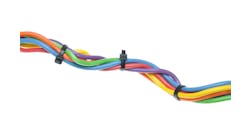Here we finish up the extensive presentation of how to get the most out of your PID. We start with a look at the contribution of each mode and show how to estimate performance metrics from tuning settings and how excessive integral action and insufficient proportional action create oscillations. The key role of dead time, external reset feedback and different PID Forms and Structures is given.
The following key points support and augment the PID Options and Solutions - Part 2 and PID Options and Solutions - Part 3 recordings for the ISA Mentor Program.
2-1: To see the effect of each mode, a setpoint change can be made to a PID with a Structure of “PID on Error” (no setpoint filter or lead-lag) and freezing the process variable PV so that there is no feedback and so what is seen is the PID response solely due to the setpoint change. The same results could be observed by stepping the PV via the Analog Input block Simulate input keeping the SP constant.
2-2: The proportional mode provides a step change in output proportional to the step change in error. The derivative mode with a built in filter with a time constant that is about 1/8 the rate time provides a kick that decays out to zero. The integral mode ramps the output and at the transpired time equal to the reset time the integral mode contribution to the output will equal the output step from the proportional mode. Hence integral time settings are in terms of seconds per repeat or minutes per repeat where “per repeat” means the integral mode has repeated the contribution from the proportional mode. Often the term “per repeat” is dropped. Tuning settings that are the inverse of the integral time, usually include the “repeat” term, such as “repeats per second” and “repeats per minute”.
2-3: The integral mode will continue to increase its contribution to the PID output in the direction to cross the setpoint (SP) as the process variable approaches the SP. It only reverses direction after the PV crosses the SP, too late considering all processes have deadtime. This causes overshoot and hunting. Integral action is never satisfied and is always ramping the output since the error is never exactly zero.
2-4: The proportional mode will decrease its contribution to the PID output that is in the direction of driving the PV to cross SP, effectively working to stop the PV as the PV gets closer to the SP. This anticipation helps prevent the PV from crossing the SP. Derivative action is providing a contribution to the output that is proportional to slope of the approach in a direction to help stop the PV.
2-5: Most loops have too much integral action and not enough proportional action resulting in a SP overshoot to achieve a new setpoint or return to an existing setpoint in the recovery from a load upset. If there is too much proportional action relative to integral action, the approach to setpoint will falter (PV trend momentarily flattens out and then resumes the approach). This is a rate case but can occur for deadtime dominant processes that inherently need more integral and less proportional action.
2-6: Humans looking at digital displays of PV and SP are prone to advocate and even manually do what the integral mode does. Looking at the reactor temperature loop example faceplate or numerical values of PV and SP, humans expect for a PV value below SP that the steam valve should be open whereas a trend chart with an intelligent time scale would show the cooling water valve should be open based on the PV slope. See the 6/28/2012 Control Talk Blog “Future PV Values are the Future” for how to easily provide a PV value one deadtime into the future to help operators and engineers gain some anticipation and recognition that processes cannot stop on a dime.
2-7: The ultimate limit to the error from a step load upset to the process input for a perfectly tuned PID would approximate two right triangles placed back to back where each base is the dead time. The amplitude of the triangles that is the peak error is proportional to the ratio of the dead time to the dead time plus time constant. The area of the triangles that is the integrated error is proportional to this peak error multiplied by the dead time and thus the dead time squared. Dead time can come from the valve, process, piping, equipment, sensor, transmitter, PID execution time and filter time. Decreasing the dead time enables decreasing lambda and hence more aggressive PID tuning. A lambda equal to 3 dead times is typical unless there is significant nonlinearity or unknowns in the control loop response dynamics requiring a larger lambda. This lambda can tolerate an increase in total loop dead time or open loop gain of up to 300% without starting a significant oscillation. This lambda provides a gain margin of about 6 and a phase margin of about 76 degrees for self-regulating processes.
2-8: The practical limit to the error for a step load upset depends upon the PID tuning. Decreasing the PID gain affects both the peak error and integrated error whereas increasing the reset time mostly affects the integrated error. The performance for a load upset can be easily tested by momentarily putting the PID in manual, making a step change in the PID output and immediately putting the PID back in automatic. The open loop error can be seen for self-regulating processes by leaving the PID in manual.
2-9: The ultimate limit to the rise time (time to reach setpoint) for a setpoint change is about 2 dead times and is achieved by a very large PID gain (lambda slightly less than the dead time) or setpoint feedforward if output limits do not restrict the change in output. Usually, the prevention of overshoot is more important than minimizing the rise time. The tracking of a PID output that is the output limit and then using a future PV value to determine when to put the output at the final resting value and then releasing the PID from the track mode after one dead time can minimize the rise time to less than 2 dead times with no overshoot as explained in the May 2006 Control article “Full Throttle Batch and Startup Response”.
2-10: The use of a setpoint filter equal to the reset time enables the use of load disturbance tuning without causing much overshoot for a setpoint change. The use of a lead time equal to about ¼ the setpoint filter time will reduce the rise time but possibly create some overshoot. Alternatively, a Two Degrees of Freedom (2DOF) PID structure can be used with beta and gamma equal to about 0.25.
2-11: Near-integrating, true integrating and runaway processes will develop oscillations from a PID gain too small that are greater than the amplitude and period of oscillations for a PID gain too high unless the reset time is increased. The proportional mode provides the negative feedback action missing in these processes that do not have sufficient self-regulation.
2-12: The amplitude and period of oscillations from backlash increases as the PID gain decreases similar to what occurs for violation of the low PID gain limit for processes without sufficient self-regulation.
3-1: Lambda tuning prevents violation of the low PID gain limit by keeping the product of the PID gain and reset time greater than the inverse of the equivalent integrating process gain that is critical for near-integrating, true integrating and runaway processes. Since the permissible PID gain is much higher than users are accustomed to (e.g., 80 for batch reactor temperature control), users tend to use a much lower PID gain not realizing they need to proportionally increase the reset time. Often the reset time needs to be increased by two orders of magnitude for these processes. Not realized is that external reset feedback can enable the use of high PID gains without upsetting other loops as noted in item 3-3.
3-2: The maximum desirable level error can be achieved by estimating the corresponding arrest time. For crystallizer, evaporator and reactor composition control and distillation overhead receiver reflux control, the error is minimized. For most other volumes, the error is maximized (the absorption of variability in volume is maximized) so that feed changes to downstream equipment are minimized.
3-3: The power of external reset feedback is incredible. I find more and more potential applications and benefits including directional move suppression (fast opening and slow closing surge valves, gradual smooth optimization and fast getaway for abnormal conditions, prevention of unnecessary crossings of the split range point), prevention of oscillations from deadband or a slow secondary loop or control valve, prevention of upsets to other loops from aggressive tuning settings, and proper positioning of the output of unselected PID controllers in override control (difference in outputs between selected and unselected controller is the unselected PID gain times its error so that it takes over when its PV hits its setpoint).
3-4: The enhanced PID can tolerate variable and large analyzer cycle times. For self-regulating processes where the cycle time is much greater than the 63% response time, the PID gain can be increased to be almost the inverse of the open loop gain. External reset feedback is turned on in the enhanced PID.
3-5: PID structure options help the PID do well in many diverse applications.
3-6: The positive feedback implementation of integral action is essential for external reset feedback. Most DCS systems think they have this capability but don’t. Unless the integral action is achieved by a filter whose input is the PID output or feedback of the manipulated variable and whose filter time is the reset time with the filter output added to the output from the proportional mode creating positive feedback, the PID does not really have external reset feedback. For more info see the May 2006 article by Greg Shinskey “The power of external-reset feedback”.
This is “no repeat” day. I will not repeat a Control Talk Blog today. I repeat that I will not repeat a Control Talk Blog today.




